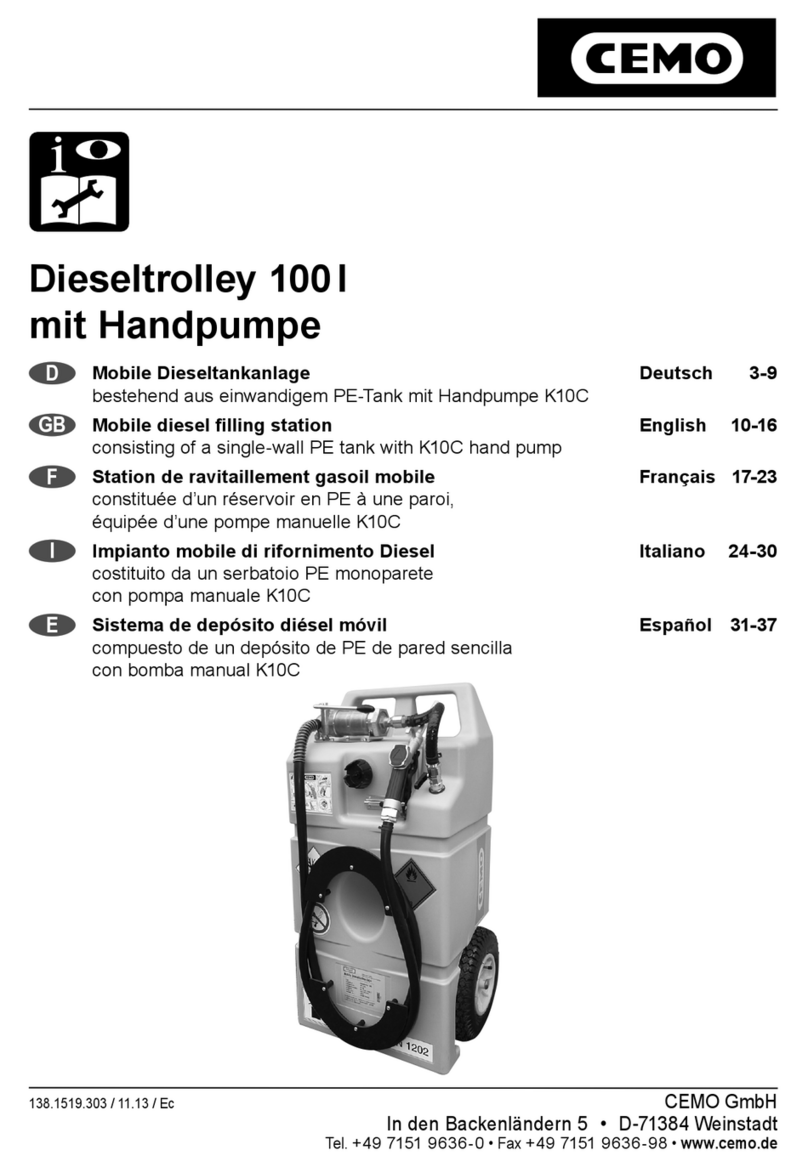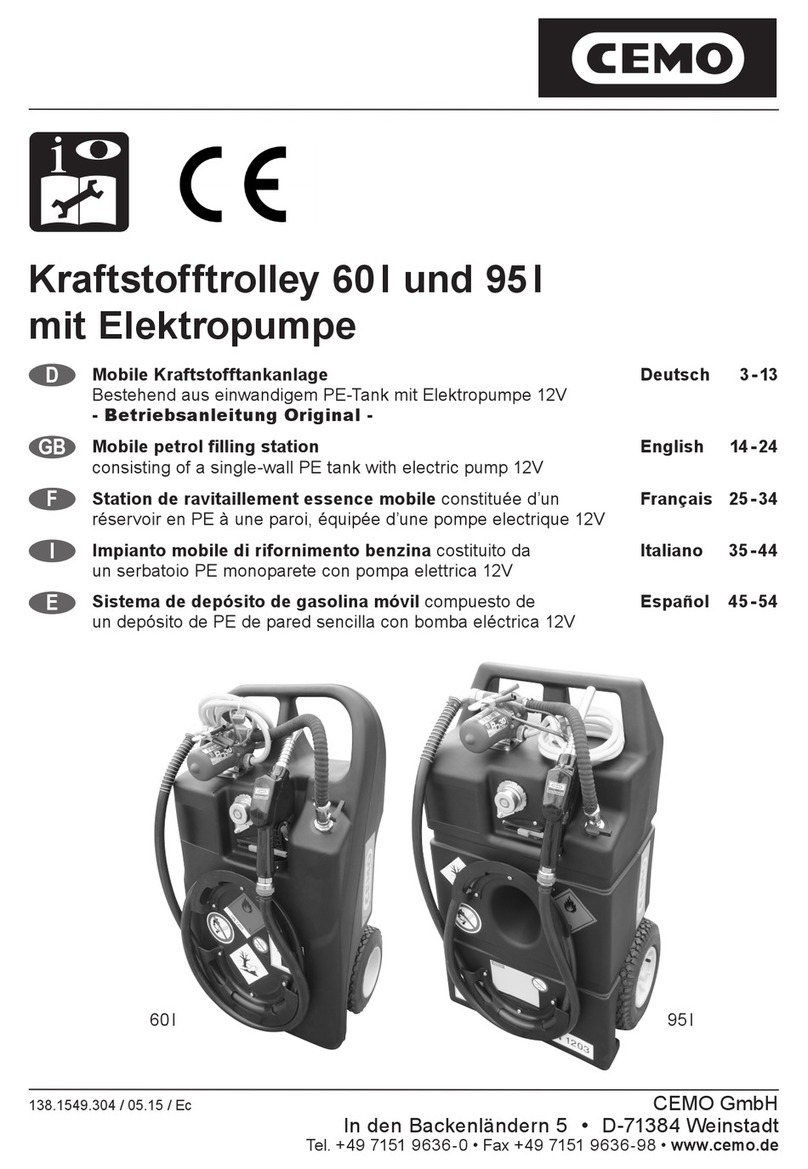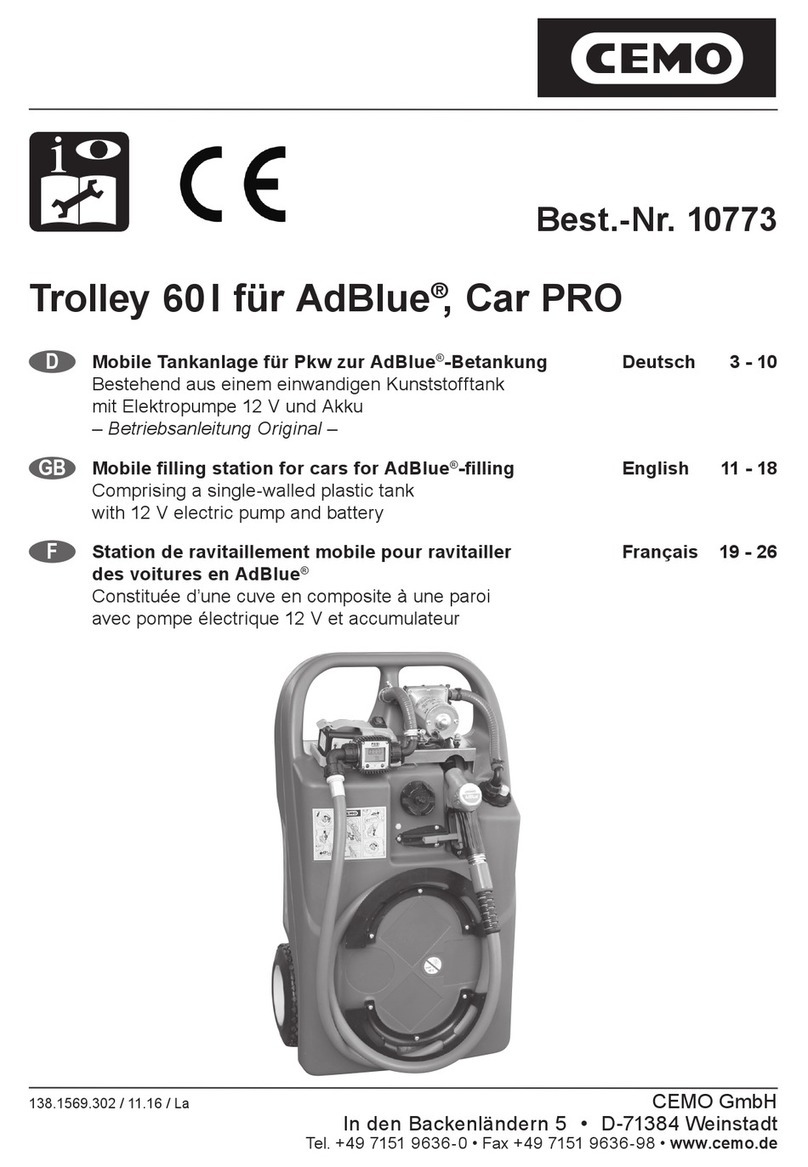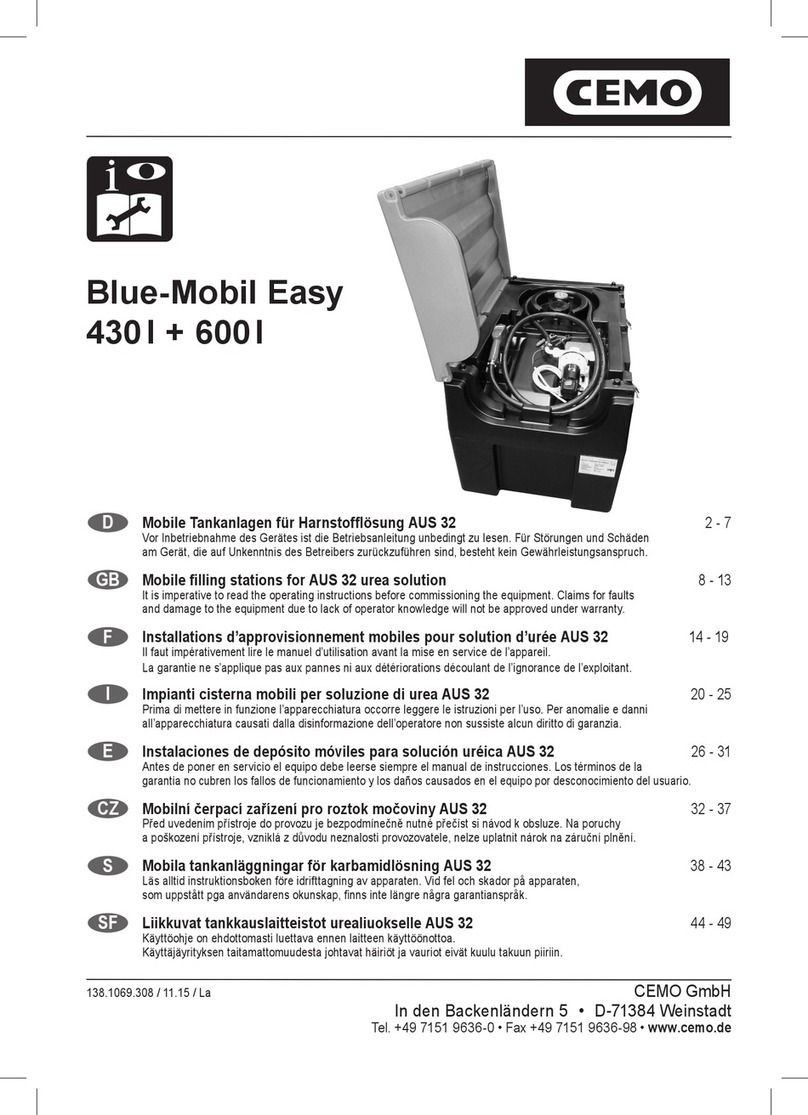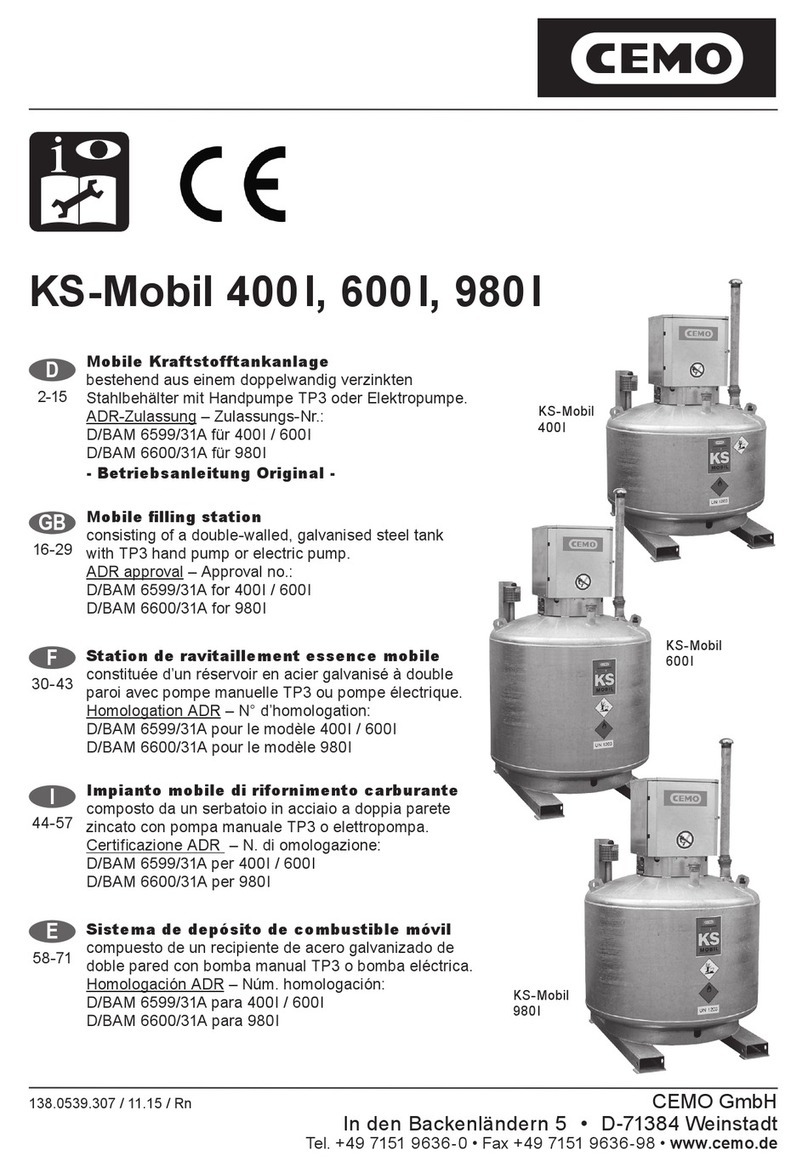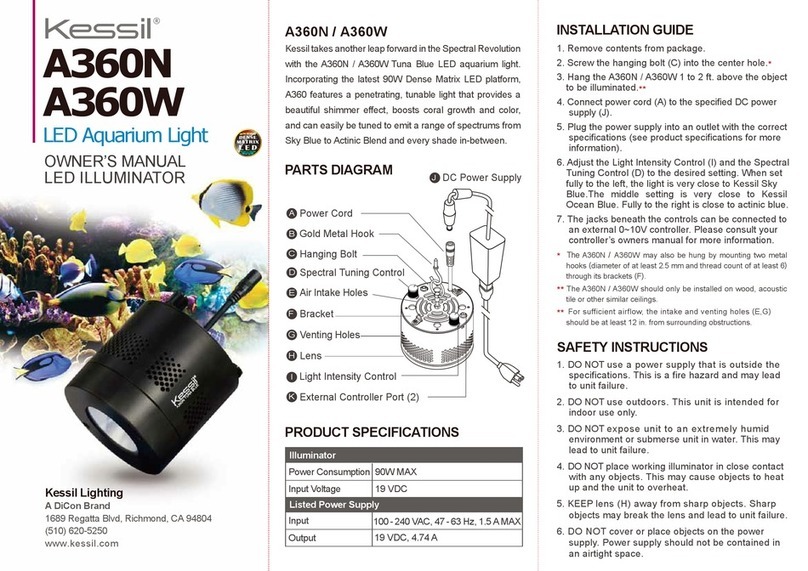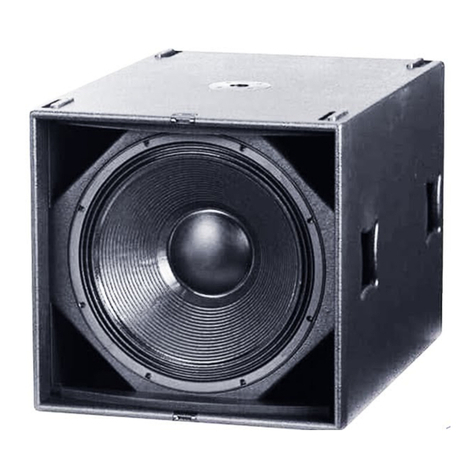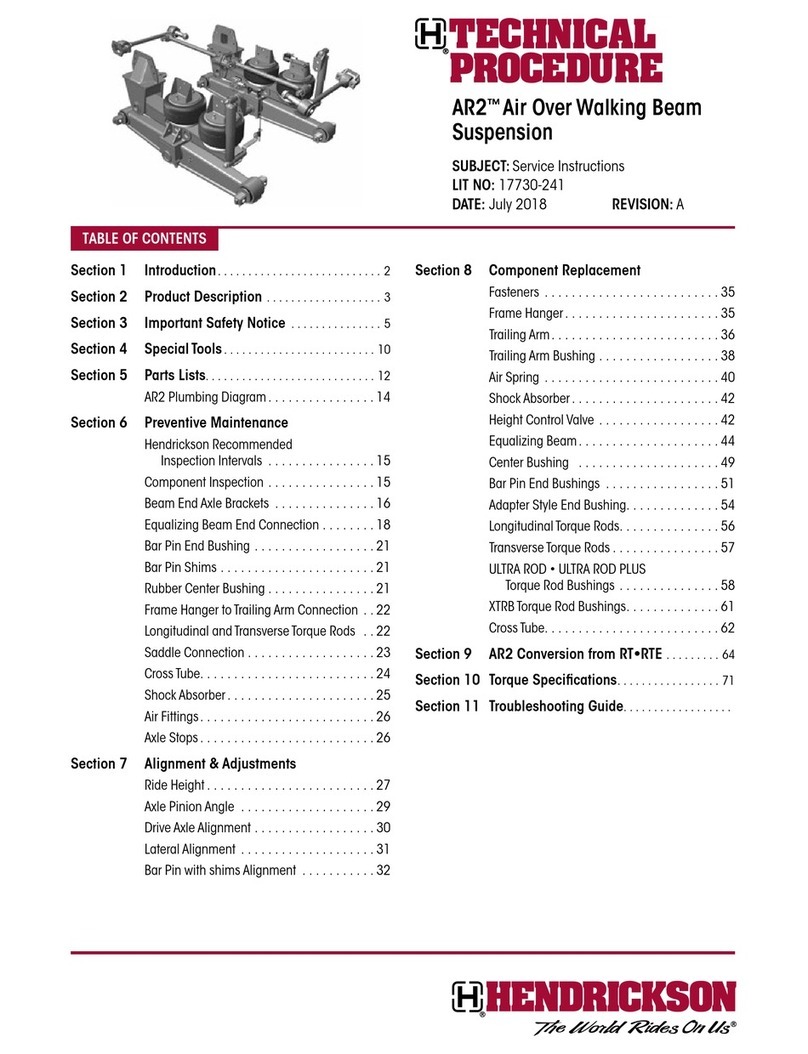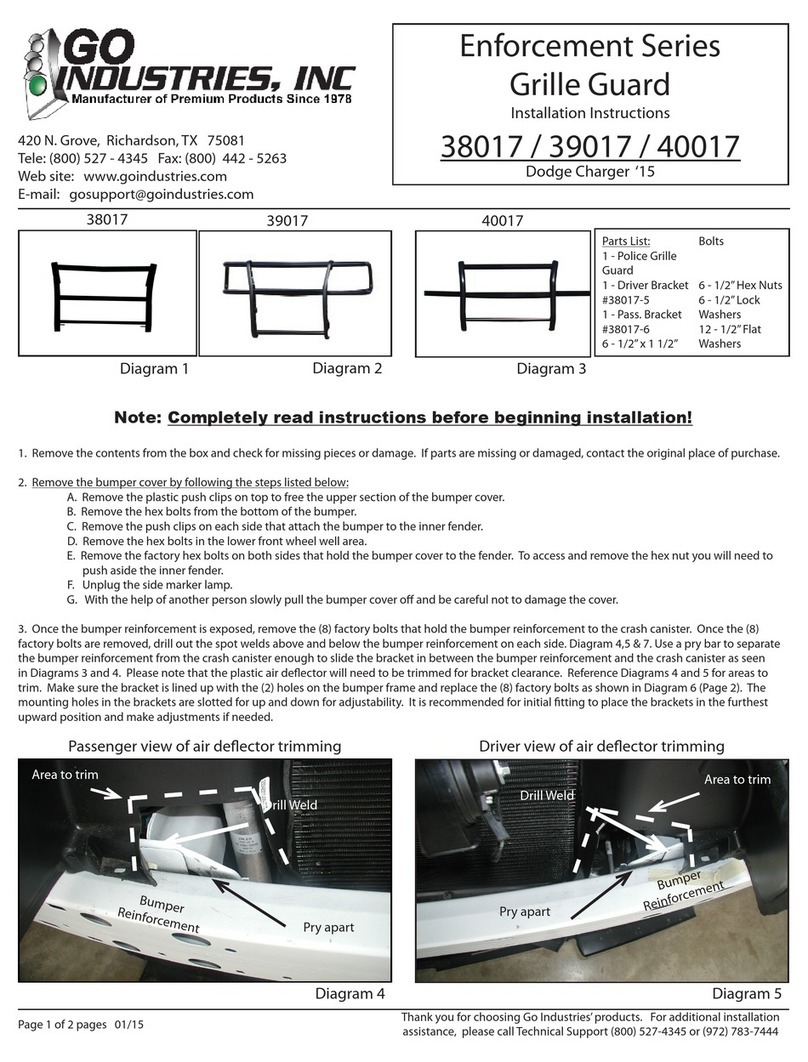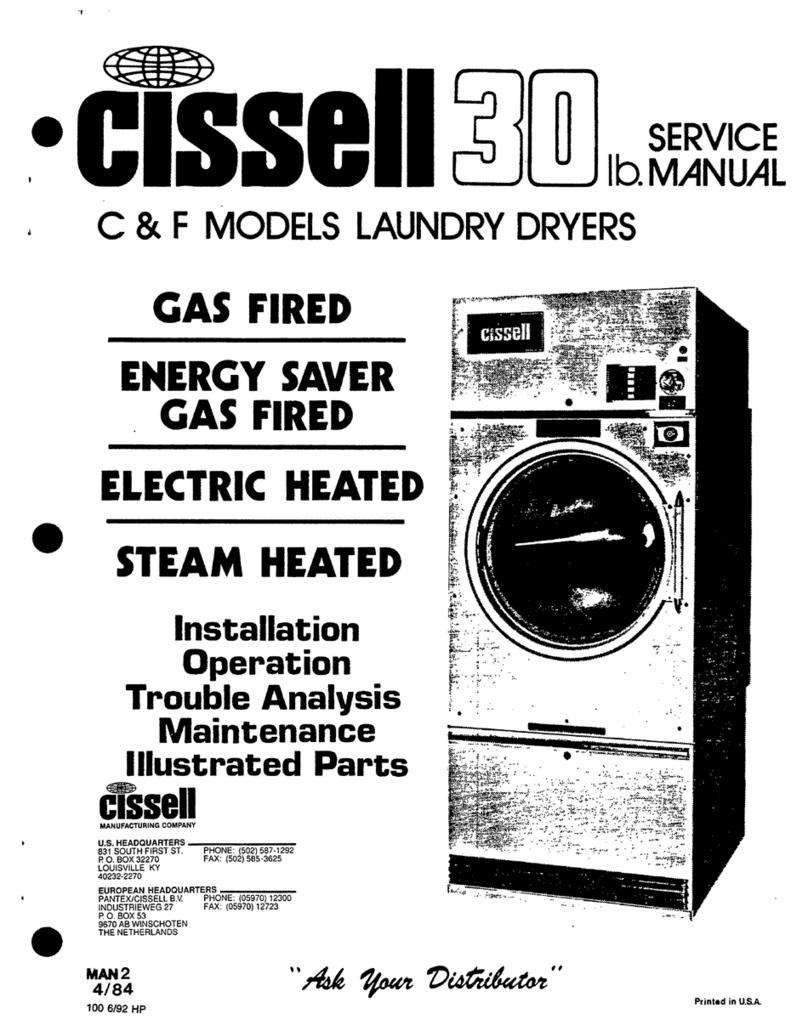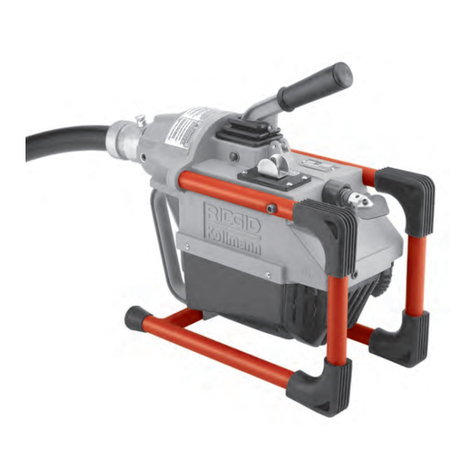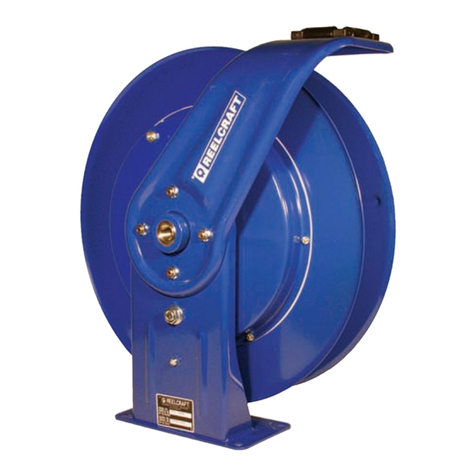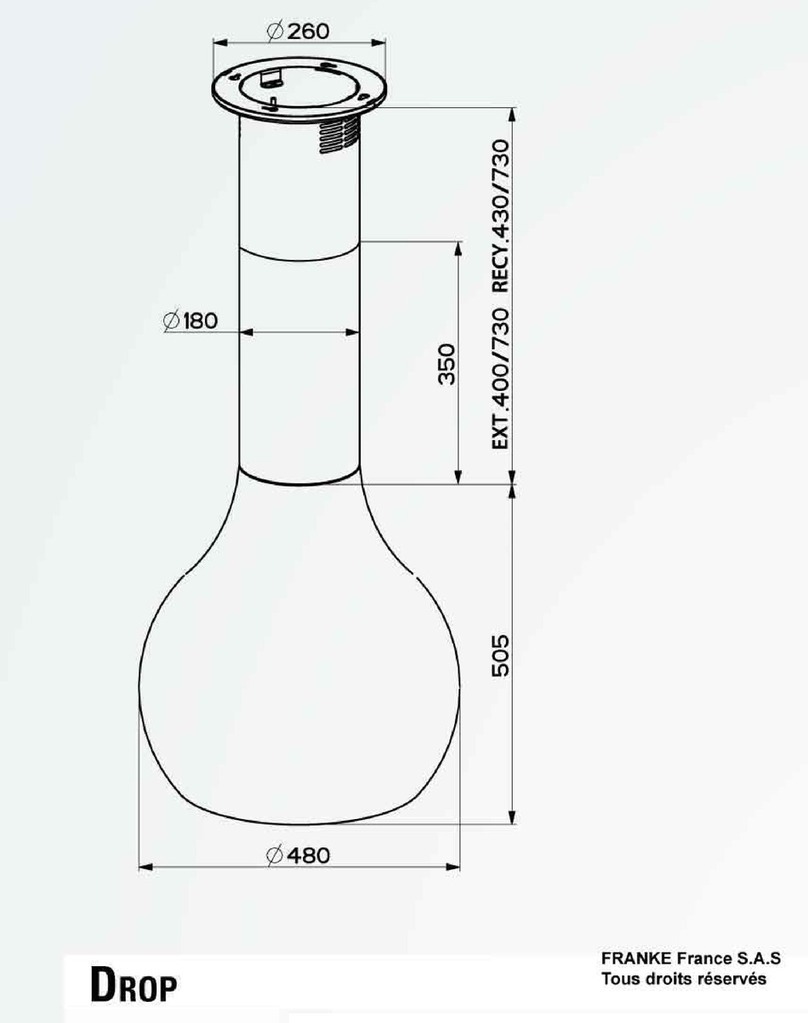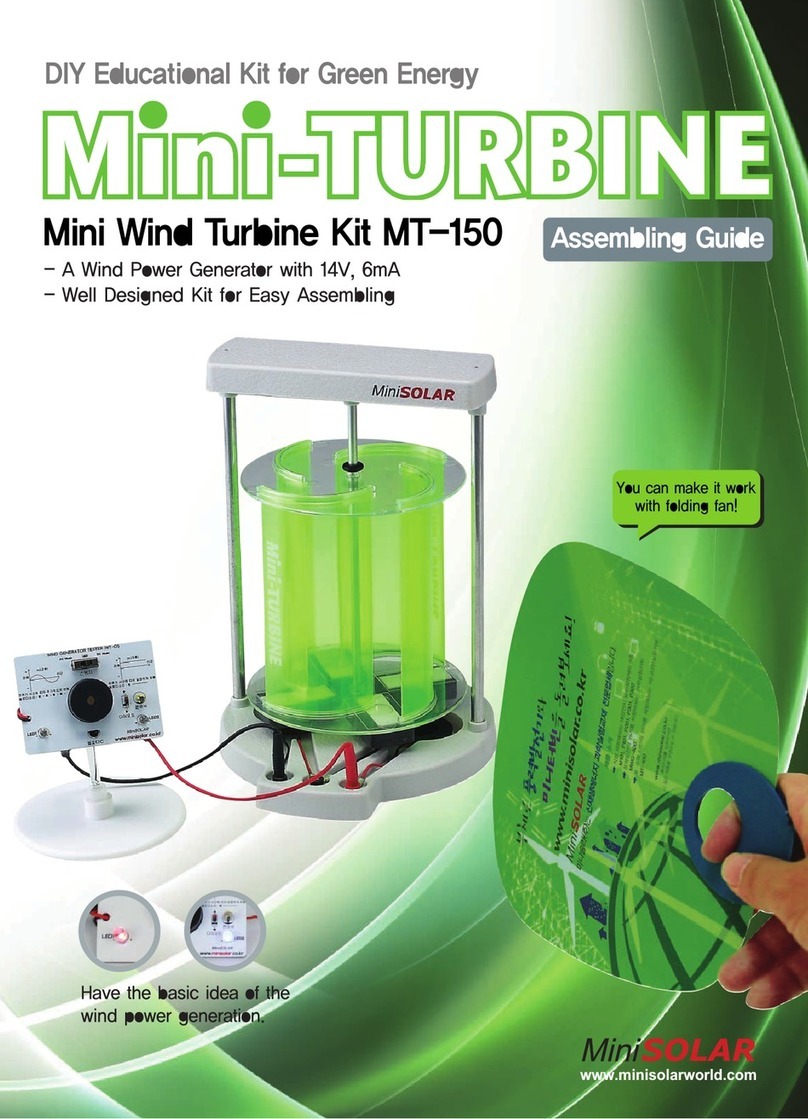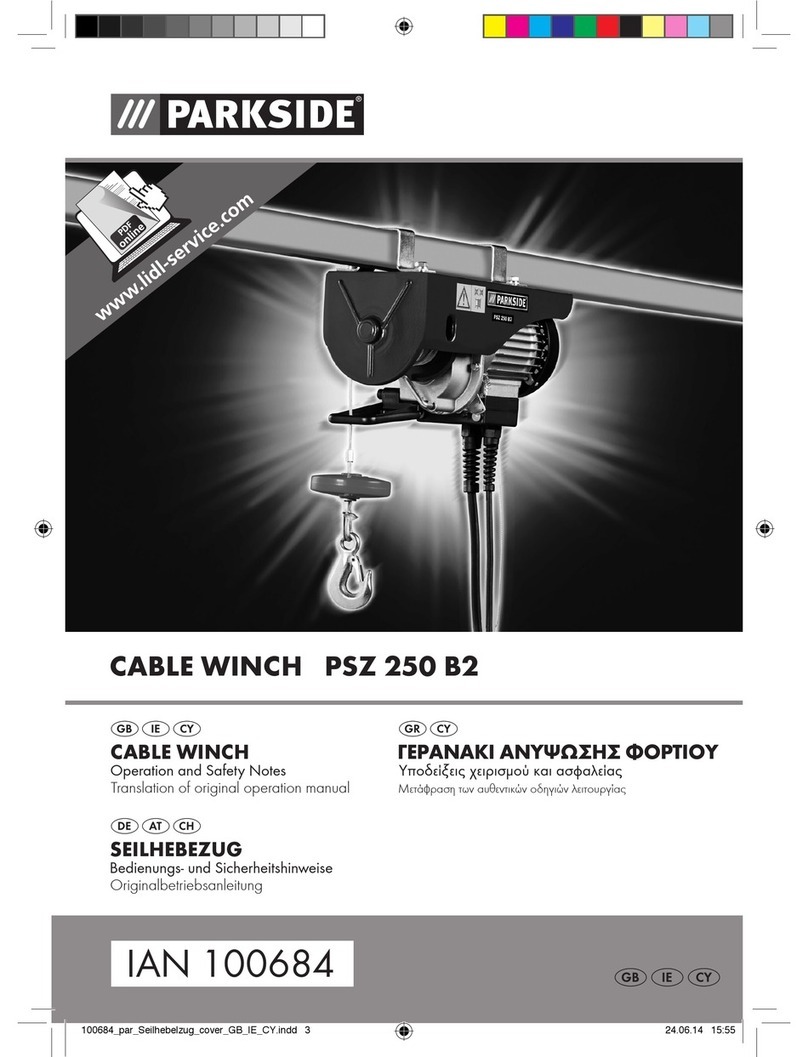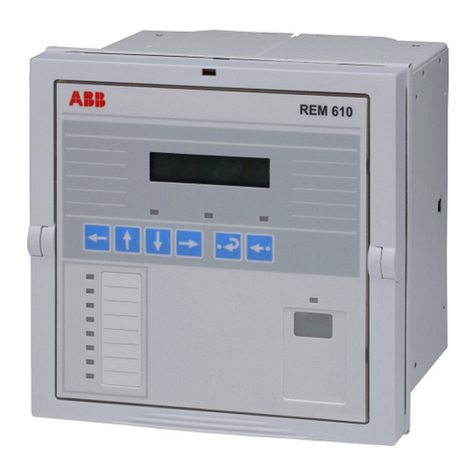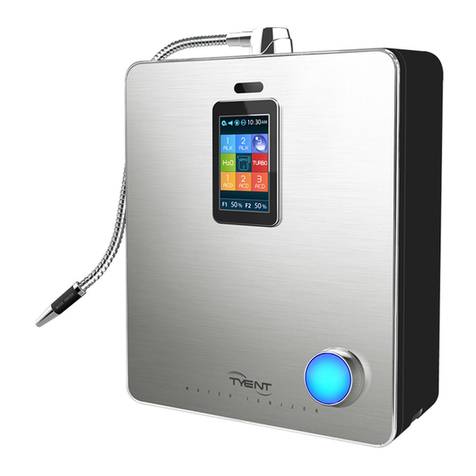
D
3
Inhalt
1. Allgemeines
1.1 Sicherheit
1.1.1 Instandhaltung und
Überwachung
1.1.2 Originalteile verwenden
1.1.3 Bedienung der Tankanlage
1.1.4 Warnhinweise an der Tankanlage
1.2 Bestimmungsgemäße Verwendung
1.3 Sachwidrige Verwendung
2. Technische Daten
2.1 Tank
2.2 Pumpe
2.3 Ölabgabepistole
2.4 Akku
3. Aufbau
3.1 Aufbau Schmierstofftrolley 60l / 100 l
3.2 Aufbau Schmierstoff-Mobil Easy
200l / 430l
4. Erstinbetriebnahme
4.1 Schmierstofftrolley
4.2 Schmierstoff-Mobil Easy
5. Betrieb
5.1 Lagerung
5.2 Bewegen des Schmierstofftrolley
5.3 Verladen
5.4 Transportieren
5.5 Tank befüllen
5.5.1 Schmierstofftrolley
5.5.2 Schmierstoff-Mobil Easy
5.6 Betanken
5.6.1 Schmierstofftrolley
5.6.2 Schmierstoff-Mobil Easy
6. Wartung und Inspektion
6.1 Sicherheitsmaßnahmen
6.2 Wartungs- und Inspektionstabelle
7. Stilllegung /Dekommissionierung
8. Gewährleistung
9. EG-Konformitätserklärung nach
Maschinenrichtlinie 2006/42/EG
Anhang II 1.A
1. Allgemeines
Die mobile Schmierstofftankanlage entspricht
dem Stand der Technik und den anerkannten
sicherheitstechnischen Regeln.
Die Tankanlage trägt das CE-Zeichen, d.h. bei
Konstruktion und Herstellung wurden die für die
Tankanlage relevanten EU-Richtlinien und har-
monisierten Normen angewandt.
Die Tankanlage darf nur in einwandfreiem
technischem Zustand in der vom Hersteller
ausgelieferten Ausführung verwendet werden.
Aus Sicherheitsgründen ist es nicht gestattet,
Umbauten an der Tankanlage vorzunehmen
(außer dem Anbau von Zubehör, das speziell
durch den Hersteller bereitgestellt wird).
1.1 Sicherheit
Jede Tankanlage wird vor Auslieferung auf
Funktion und Sicherheit geprüft.
Bei bestimmungsgemäßer Verwendung ist die
Tankanlage betriebssicher.
Bei Fehlbedienung oder Missbrauch drohen
Gefahren für
• Leib und Leben des Bedieners,
• die Tankanlage und andere Sachwerte des
Betreibers,
• die Funktion der Anlage.
Um Gefahren für Personen, Tiere und
Sachen zu vermeiden, lesen Sie bitte vor
dem ersten Betreiben der Tankanlage
diese Betriebsanleitung, insbesondere alle
Sicherheitshinweise.
Vergewissern Sie sich:
• dass Sie selbst alle Sicherheitshinweise
verstanden haben,
• dass der Bediener der Tankanlage über die
Hinweise informiert ist und sie verstanden hat,
• dass die Betriebsanleitung zugänglich ist und
bei der Tankanlage ausliegt.
1.1.1 Instandhaltung und Überwachung
Die Tankanlage muss turnusmäßig auf ihren
sicheren Zustand überprüft werden.
Diese Überprüfung umfasst insbesondere
• Sichtprüfung auf Leckagen (Dichtheit von
Befüllschlauch und Armaturen),
• Funktionsprüfung,
• Vollständigkeit / Erkennbarkeit der Warn-,
Gebots- und Verbotsschilder an der Anlage,
• die vorgeschriebenen turnusmäßigen
Inspektionen (Details siehe Kapitel 6).

